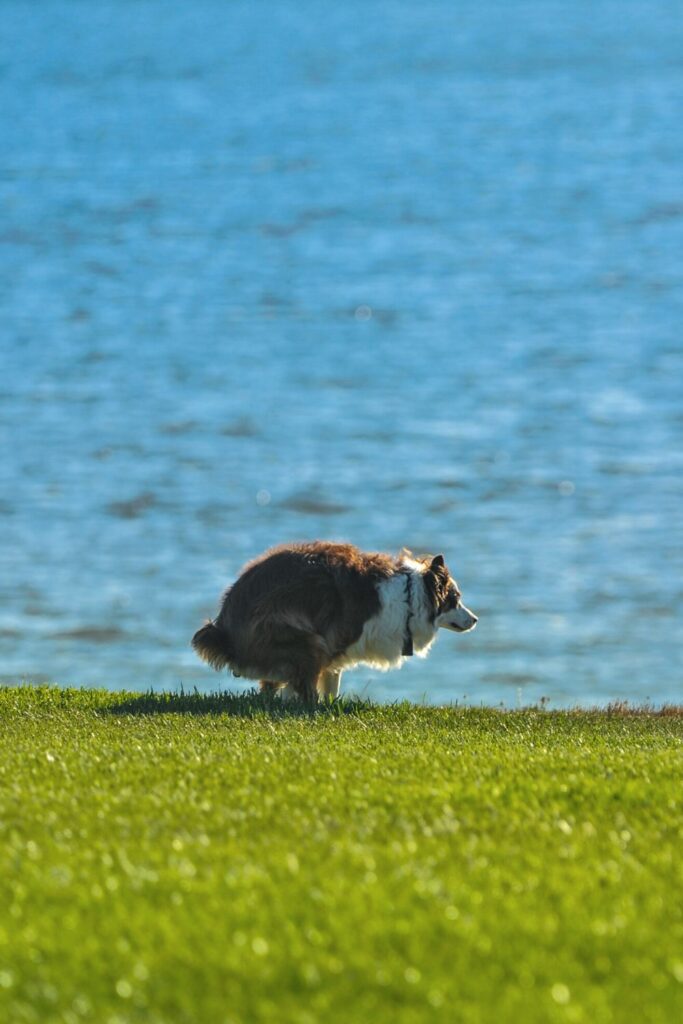What normal dog poop looks like
 Synne Hemsen Berg
Synne Hemsen Berg
Your dog’s stool can say a lot about their general health and it is wise to keep an eye on your dog’s toilet habits. Frequency, consistency, shape, size and colour help determine whether it is a normal dog poop or not.
Contact your vet if the stool is abnormal or changes suddenly. Note down some details about the stools, what the dog ate before the change happened, general diet and how much water the dog drinks. This provides a good foundation for the vet to provide the best possible help and to establish a diagnosis. You can also take a picture so the vet can see. The more information the vet has, the easier it is to make a diagnosis and offer treatment.

How often do dogs poop
How often the dog goes to the bathroom indicates whether it has diarrhoea, constipation or normal stools. If your dog poops little and irregularly, this could be a sign of constipation. Soft and frequent stools indicate that your dog has diarrhoea. Normally an adult dog will poop 2 to 3 times a day.
Diarrhoea is a sign your dog is not doing well and you should keep an eye on your dog’s general condition. If he has good energy, an appetite and otherwise acts normal, you can try home treatment. If the dog has a bad general condition, you must take it to a vet immediately.
Constipation is a sign that the dog’s digestive system is not working optimally. It can also be a sign of stress, too little water or a blockage in the digestive tract. If you suspect that your dog has eaten something that is causing a blockage, you must take it to a veterinarian.
Consistency
A normal and healthy poop should be moist and soft (a bit like playdough), but keep its shape. It should be easy to pick up without leaving residue on the ground. The poop should also be smooth without any undigested food in it or foreign objects.
Signs of constipation is a dry and cracked stool. It will also be difficult for the dog to push it out. It will often come out in smaller clumps and the size can be much smaller than the portion of food your dog eats.
If your dog has diarrhoea, the poop will be loose or watery. It will also be difficult to pick it up without leaving residue. Diarrhoea can vary from slightly loose stools to completely watery stools.
Shape of a normal stool
Normal dog poop should come out easily and look like a log/sausage shape. A normal dog poop will also have some creases in it but not be cracked and dry. There will be moisture in the stool and it should come out easily.

Colour
The colour of the dog poop can tell a lot about the dog’s condition. A normal poop should be a shade of brown. Any foreign objects, strange colours or excess mucus in the stool is not normal.
- Yellow: This may be a sign of food intolerance. Read more about the symptoms of food sensitivity and allergy in our blog.
- Red: Blood in the stool can be caused by anal fissures, haemorrhoids or parvovirus. If you suspect your dog has contracted parvovirus, take them to the vet immediately.
- Shades of brown: This is the normal colour of dog poop.
- Black: This may be a sign of digested blood and bleeding higher up in the GI tract. This can be serious. If you have recently given your dog charcoal tablets, then this will also make their stool black or dark green.
- Green: The dog may have eaten a lot of grass or something else that has coloured their poop. Monitor their overall condition and take your dog to the vet if you suspect they have ingested something toxic.
- White spots: This may be a sign of intestinal worms. Dogs should be dewormed every 3 months.
- Grey and oily: This may be a sign that your dog is not digesting fats properly or that their diet has too much fat in it. It can also be a sign of serious liver disease.

The size of a normal stool

The size of your dog’s stool should correspond to the amount of food they eat. If you have recently switched to a new food, the poop may increase in size for a couple of weeks while your dog’s digestive system gets used to the new food. If the transition to their new food was done too quickly, this can also lead to loose stools.
If the dog’s diet contains good fibre, the stool will increase in size as non-soluble fibre is not digested. Fibre is an important part of the dog’s diet as it feeds the good intestinal bacteria, gives shape to the faeces and “sweeps” the intestines. The dog’s poop also helps to empty the anal gland, so you would like it to have a normal and good size for it to do this job.

